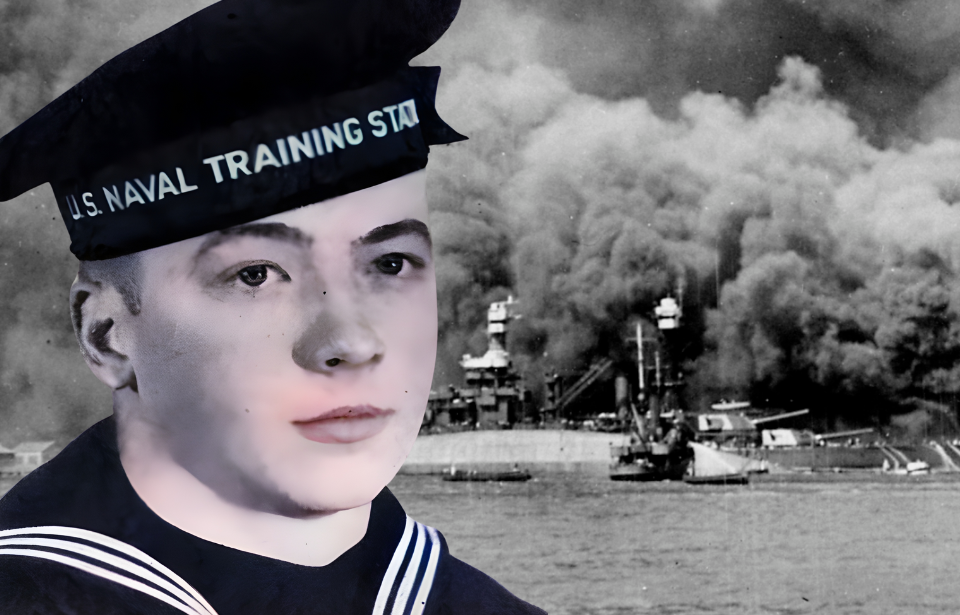The attack on Pearl Harbor was the event that spurred the United States to enter World War II. On the morning of December 7, 1941, the Japanese launched a devastating strike that caused the deaths of over 2,400 Americans, the majority of whom served with the US Navy. Among them was James R Ward, who posthumously received the Medal of Honor for his actions aboard the USS Oklahoma (BB-37) that day.
James R Ward’s early life and enlistment in the US Navy
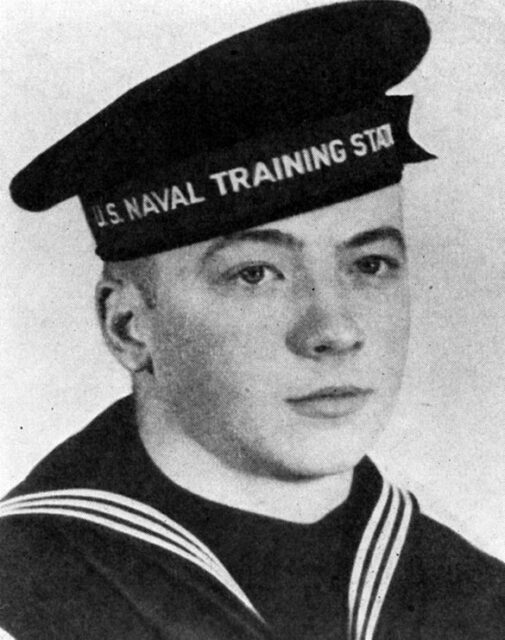
James R Ward was born on September 10, 1921, in Springfield, Ohio. Just over a year before the United States entered the Second World War, on November 25, 1940, the then-20-year-old enlisted in the US Navy. He was one of many American citizens to join the US military in some capacity between 1939-40, aware of the very real possibility that the country could soon go to war against Germany.
Following recruit and basic training, Ward was assigned to the Nevada-class battleship USS Oklahoma (BB-37) as a seaman first class, aboard which he served as a gun crew member.
Japanese attack on Pearl Harbor
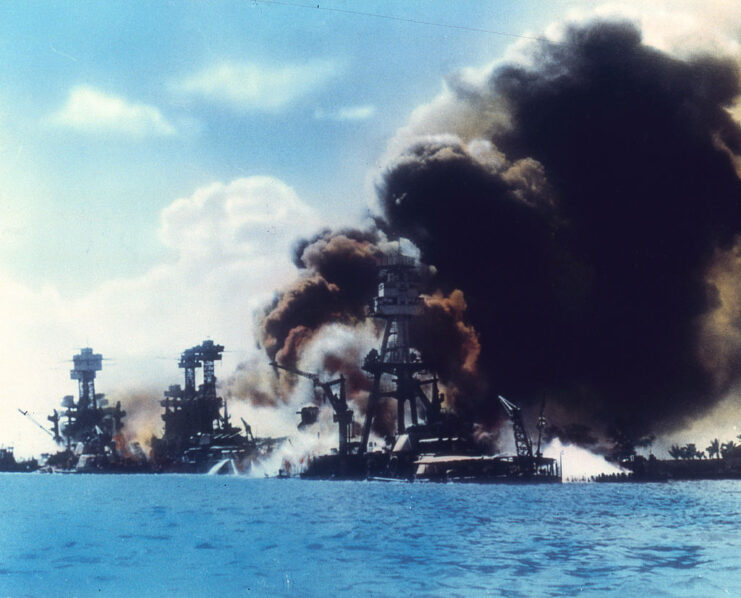
At just before 8:00 AM on December 7, 1941, the Japanese launched their surprise attack on Pearl Harbor. Targeting the ships moored at the naval base, as well as aircraft grounded at Wheeler Airfield, 353 Imperial Japanese Navy (IJN) bombers dropped their explosives, destroying and damaging several hundred pieces of military equipment and killing 2,403 people. Another 1,178 were injured.
While the Japanese had initially planned for their attack to decimate the US Pacific Fleet, the fact of the matter was that the ships that made up the bulk of the US Navy’s manpower weren’t at Pearl Harbor that day. The service’s aircraft carriers – in particular, the USS Yorktown (CV-5), Hornet (CV-8) and Enterprise (CV-6) – were elsewhere, meaning they were able to deliver a hard blow against the enemy during the Battle of Midway.
James R Ward’s bravery aboard the USS Oklahoma (BB-37)
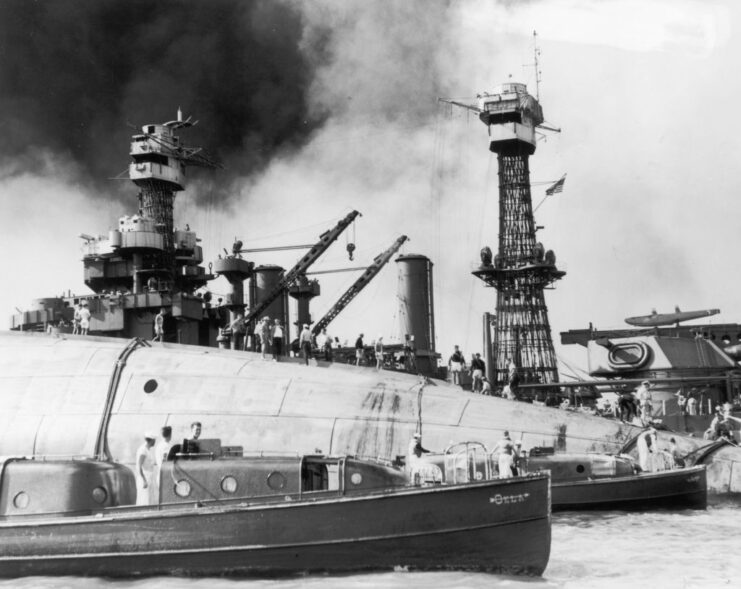
When the Japanese launched their devastating strike on Pearl Harbor, James R Ward was still aboard the USS Oklahoma. The vessel was among the primary targets of the attack and suffered three torpedo strikes soon after it began. Filling with water, the vessel began to list, indicating she would soon capsize. As such, the order was given for everyone to abandon the battleship.
Ward helped others escape
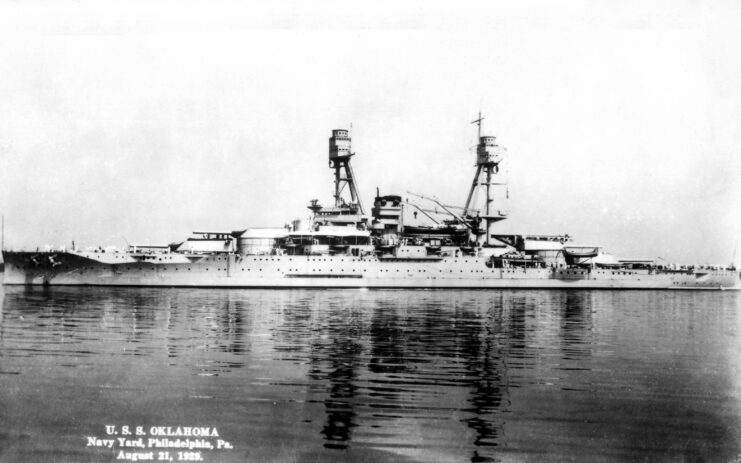
While it would likely result in his own death, Ward remained behind, positioning himself in his assigned 14-inch gun turret with a flashlight to help his fellow sailors escape. This singular beam of light helped the others in the turret navigate the darkness, saving their lives. Many later spoke of Ward’s selflessness once things had settled.
When Oklahoma sunk beneath the water, Ward was among the hundreds of men still aboard the battleship.
Identification and the Medal of Honor
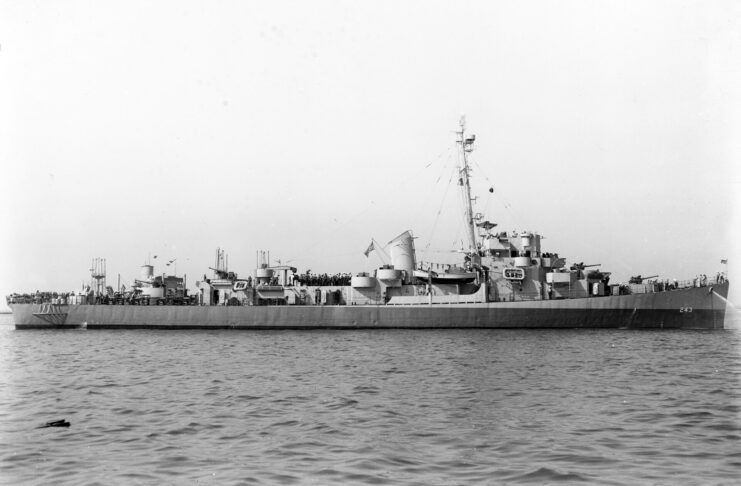
For his bravery on December 7, 1941, James R Ward was posthumously awarded the Medal of Honor, one of many to receive the distinction for their actions that infamous day. He was also honored in 1943 when the destroyer escort USS J. Richard Ward (DE-243) was named for him. The vessel remained active until 1946, performing duties in the North Atlantic and off the coast of South America.
In 2015, the Department of Defense announced the launch of the USS Oklahoma project, aimed at identifying the remains from the vessel that were still without a name. Called “unknowns,” they were buried at the National Memorial Cemetery of the Pacific in Honolulu, Hawaii. On August 19, 2021, the Defense POW/MIA Accounting Agency (DPAA) announced that it had officially identified Ward’s remains, thanks to DNA analysis. Samples were provided by his nephew and distant relatives.
New! Want to become a trivia master? Sign up for our War History Fact of the Day newsletter!
More from us: Four Men Aboard the USS California (BB-44) Were Awarded the Medal of Honor
That December, the seaman first class was reinterred at Arlington National Cemetery. In his honor, a cenotaph was also erected in Ferncliff Cemetery in his hometown.
